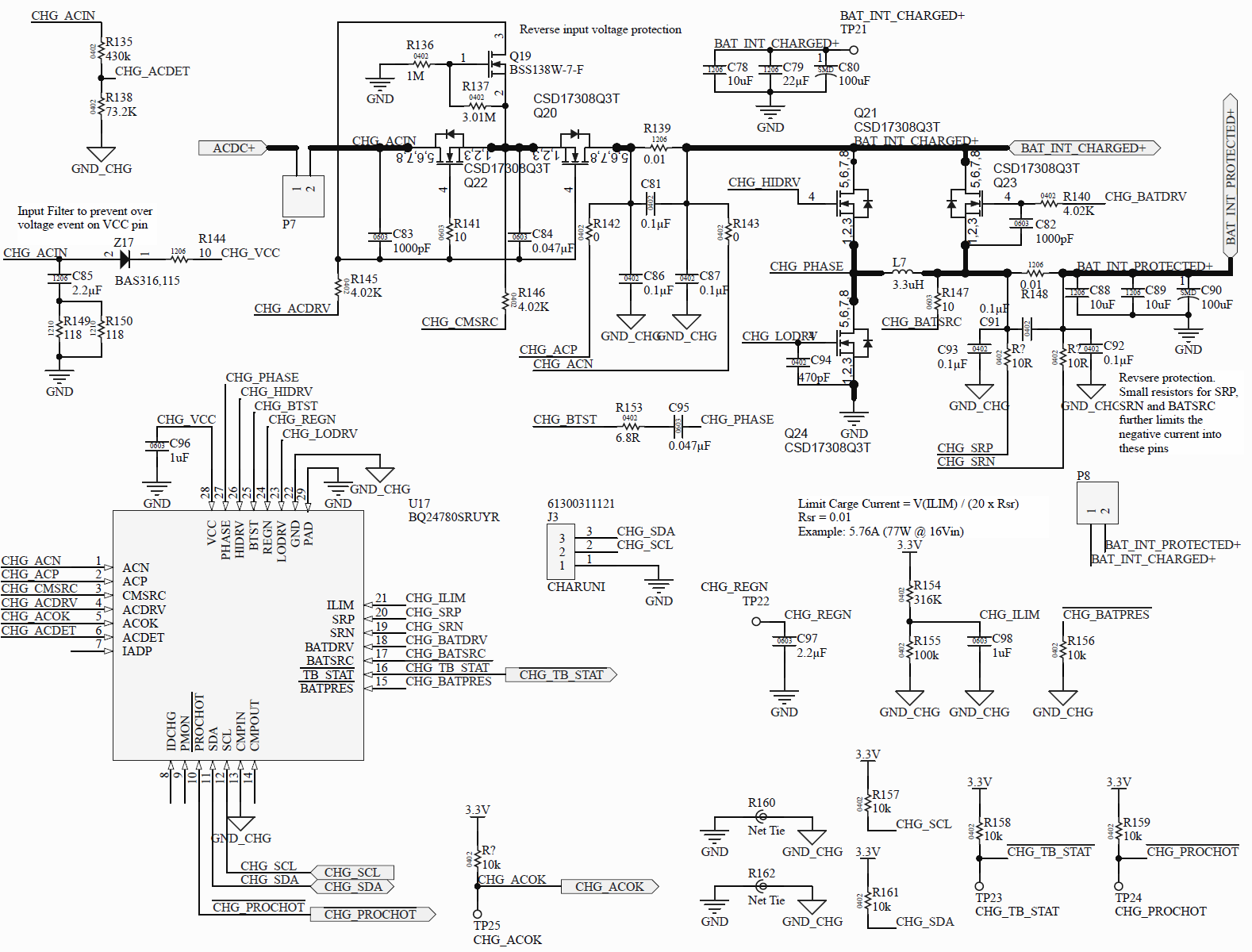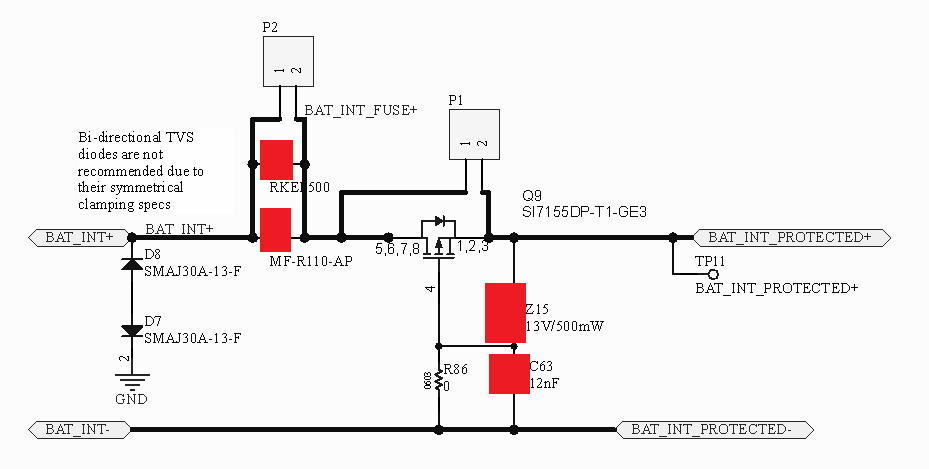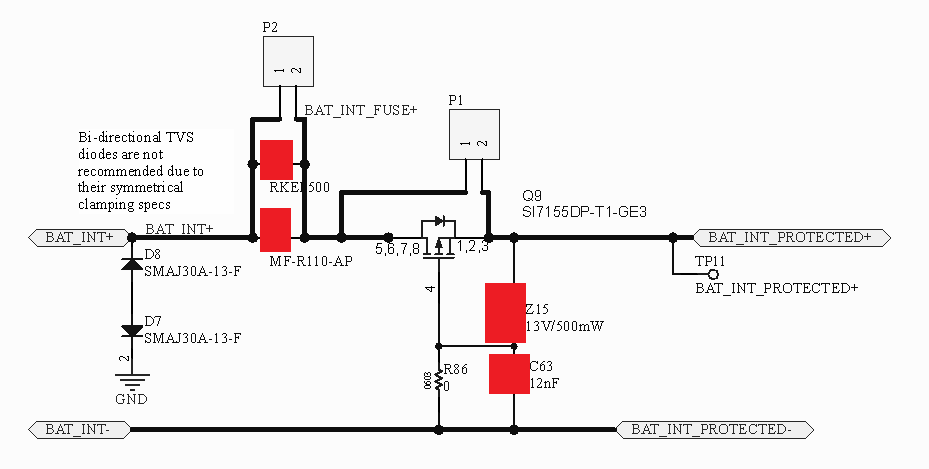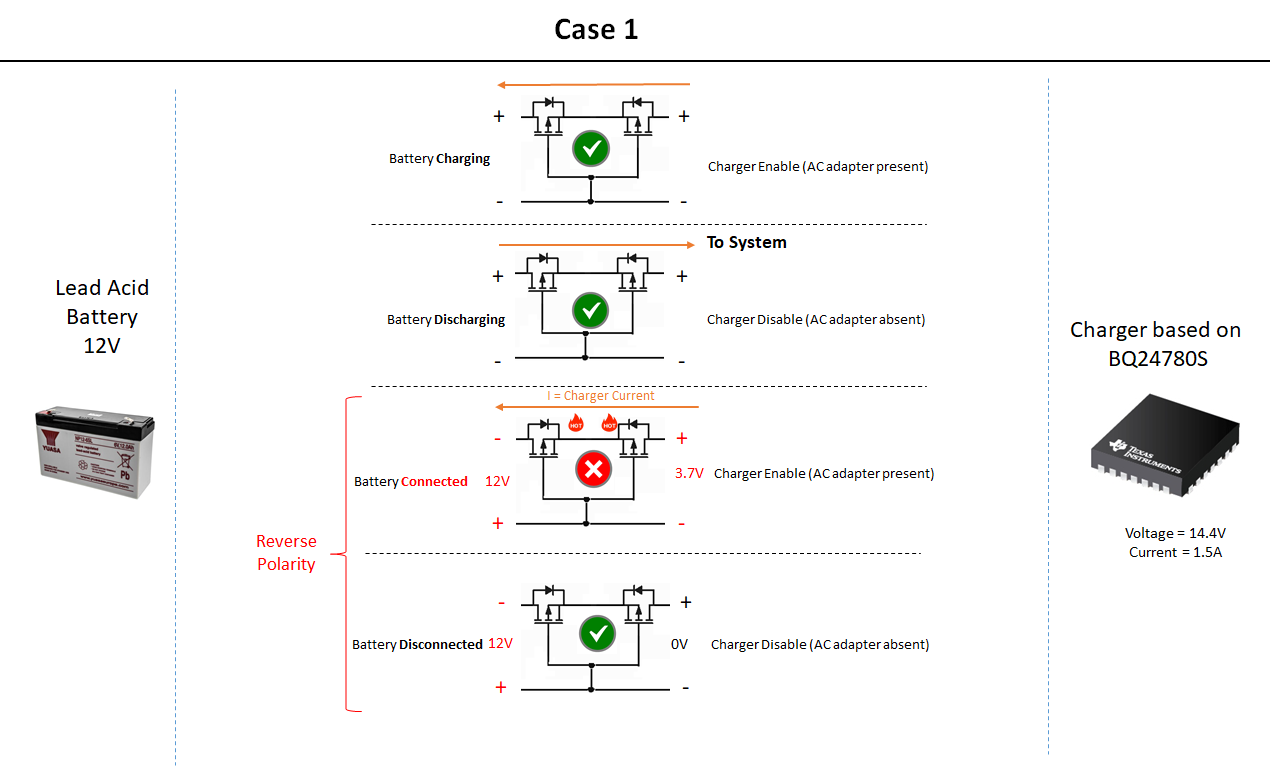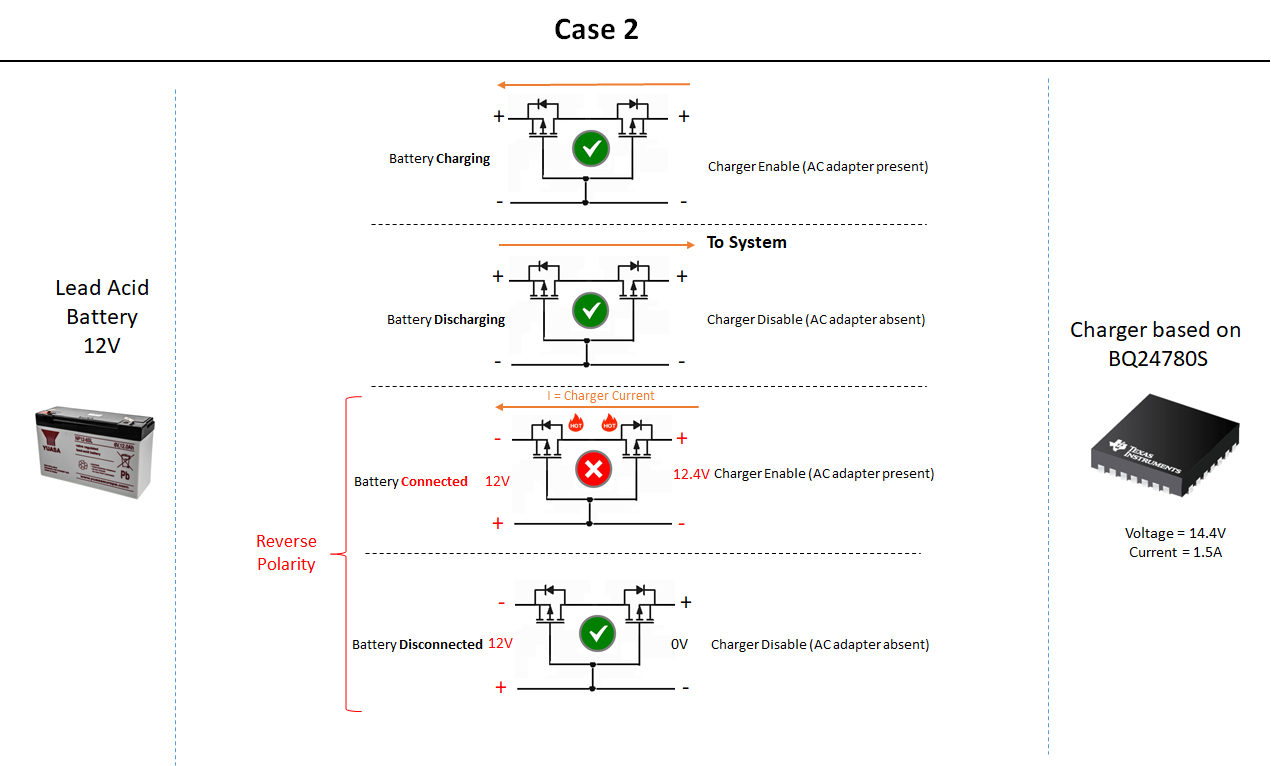Other Parts Discussed in Thread: BQ24780, BQ24075
Hello,
A circuit is designed based on BQ24780S EVM.
During testing, when the user connect the battery incorrectly (reverse polarity) the IC get damaged including some of the external FET.
Once all FET and IC are replaced, the circuit work again.
A reverse polarity test was performed with a power supply (with current controlled) and the results were similar, the power supply current was same as the maximum allowed by the device.
The design is using the suggested resistors for SRP, SRN and BATSRC.
Please, may I know if the BQ24780S have protection for reverse battery connection? Or perhaps, the design is missing something?
Thanks



